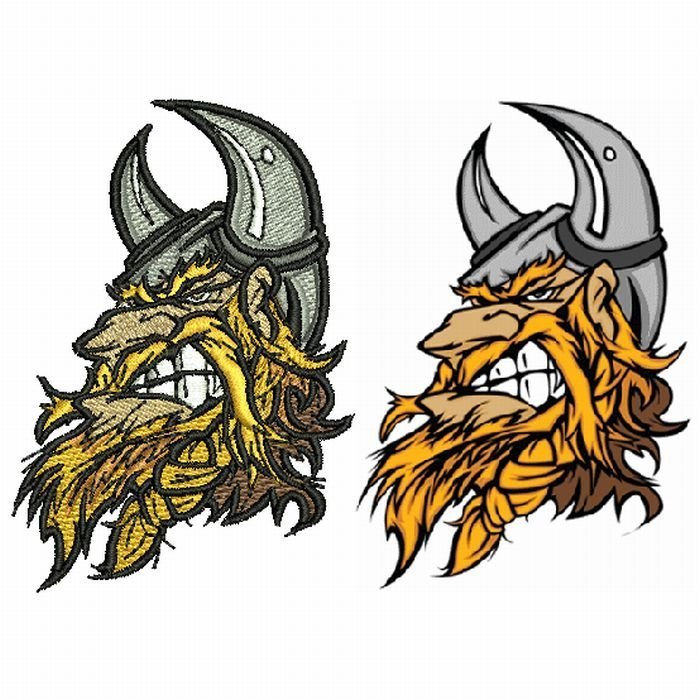Check Out Different Sorts Of Needlework Digitizing Methods
Embroidery digitizing has actually evolved substantially over the years, providing a myriad of strategies to bring layouts to life in the electronic realm. The world expands to extra innovative techniques like photorealistic needlework digitizing and the fascinating realm of 3D needlework digitizing.
Standard Hand Needlework Digitizing
Conventional hand embroidery digitizing entails the procedure of transforming detailed hand-stitched designs right into electronic formats for machine embroidery. This technique requires proficient craftsmens to meticulously evaluate the handmade design and after that make use of specialized software application to recreate it in a digital layout. Each stitch, color, and information needs to be thoroughly equated to guarantee that the essence of the initial hand needlework is preserved in the digital version.
One of the vital challenges of typical hand embroidery digitizing is recording the intricacies and subtleties of the handmade style. Digitizing for Embroidery. Craftsmens must have a deep understanding of various needlework techniques, such as satin stitch, chain stitch, and French knots, to precisely reproduce these methods in the digital realm. In addition, they need to have a keen eye for detail to make sure that the digital style maintains the exact same level of creativity and workmanship as the initial hand-stitched piece
Punching Strategy
To flawlessly shift from conventional hand embroidery digitizing to the punching technique, craftsmens have to currently focus on transforming the detailed digital designs right into directions that embroidery makers can translate. The boxing technique entails using specialized software application to develop digital files which contain commands for the embroidery device to follow. This procedure requires a deep understanding of not just the design itself yet also the capabilities and restrictions of the embroidery machine.

Auto-Digitizing Software Program Programs
Embroidery digitizing has actually been changed by the development of auto-digitizing software application, offering artisans with advanced tools to transform electronic designs into embroidery machine directions successfully. Auto-digitizing software application utilize formulas to assess electronic images or vector data and produce needlework layouts instantly. These programs permit fast and precise conversion of elaborate styles into stitch patterns, saving time and effort for embroiderers.
Among the essential advantages of auto-digitizing software program is its straightforward interface, making it obtainable to both beginners and knowledgeable digitizers. These programs commonly include functions such as stitch editing and enhancing devices, thread color matching, and the learn this here now ability to sneak peek the final stitched style. In addition, auto-digitizing software can manage complicated styles with several shades and elaborate details, creating premium needlework data appropriate for numerous apparel and textile tasks.
While auto-digitizing software application uses ease and efficiency, it is essential for individuals to recognize the restrictions of automated digitizing. Fine-tuning and manual changes may still be required to achieve the my latest blog post preferred needlework high quality, specifically when taking care of elaborate or special styles. By leveraging the capabilities of auto-digitizing software along with manual digitizing methods, craftsmens can enhance their needlework digitizing procedure and develop magnificent embroidered pieces.
Photorealistic Needlework Digitizing
Utilizing advanced electronic imaging methods, attaining photorealistic cause needlework digitizing has ended up being a popular ability amongst contemporary craftsmens. This technique includes converting high-resolution pictures into complex stitch patterns that closely simulate the initial design, causing embroidery pieces that exhibit natural detail and deepness.
To achieve photorealistic embroidery digitizing, craftsmens should have an eager eye for detail and an extensive understanding of just how different stitch kinds and densities can influence the last outcome. By carefully mapping out each color and color in the image, embroiderers can produce a digital data that guides the needlework machine to duplicate the subtleties of the initial image accurately.
Photorealistic needlework digitizing is especially prominent in creating customized styles for apparel, home decoration, and art items where capturing the essence of a photograph or art work is crucial. This method enables artisans to transform memories, landscapes, portraits, and elaborate art work into stunning embroidered masterpieces that showcase a blend of traditional workmanship and cutting-edge innovation.
3D Embroidery Digitizing
With the advancement of electronic imaging strategies in achieving photorealistic lead to needlework digitizing, the expedition of 'D Embroidery Digitizing' provides a new dimension to the ins and outs of design duplication. 'D Embroidery Digitizing' describes the three-dimensional digitizing method that adds depth and structure to embroidery designs, producing a more practical and visually attractive last product. This technique makes use of software that mimics the impact of light and shadow on the needlework layout, enhancing its total visual impact.
Among the crucial benefits of 'D Needlework Digitizing' is its capability to make designs look even more lifelike and vibrant. By adding deepness to the embroidery style, the last item appears much more sensible and captivating (Digitizing for Embroidery). In addition, this technique allows for even more creative liberty in style implementation, see this website enabling embroiderers to explore various appearances and effects that were previously challenging to achieve
Final Thought

Comments on “Expert Digitizing for Embroidery: Fast and Reliable Solution”